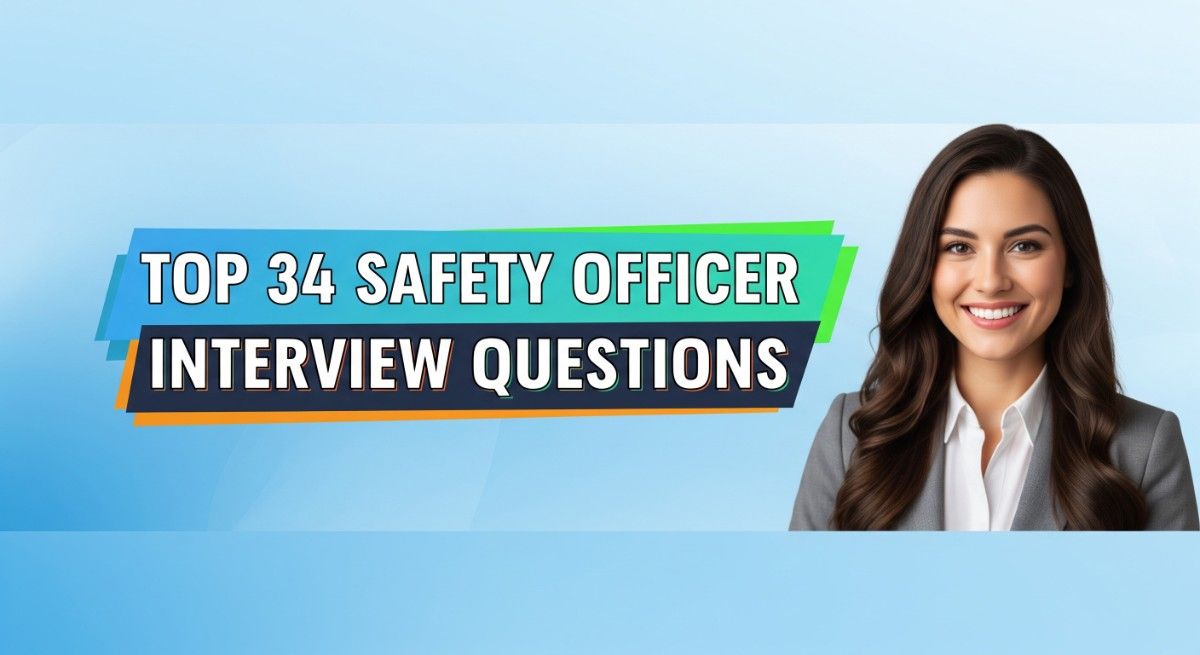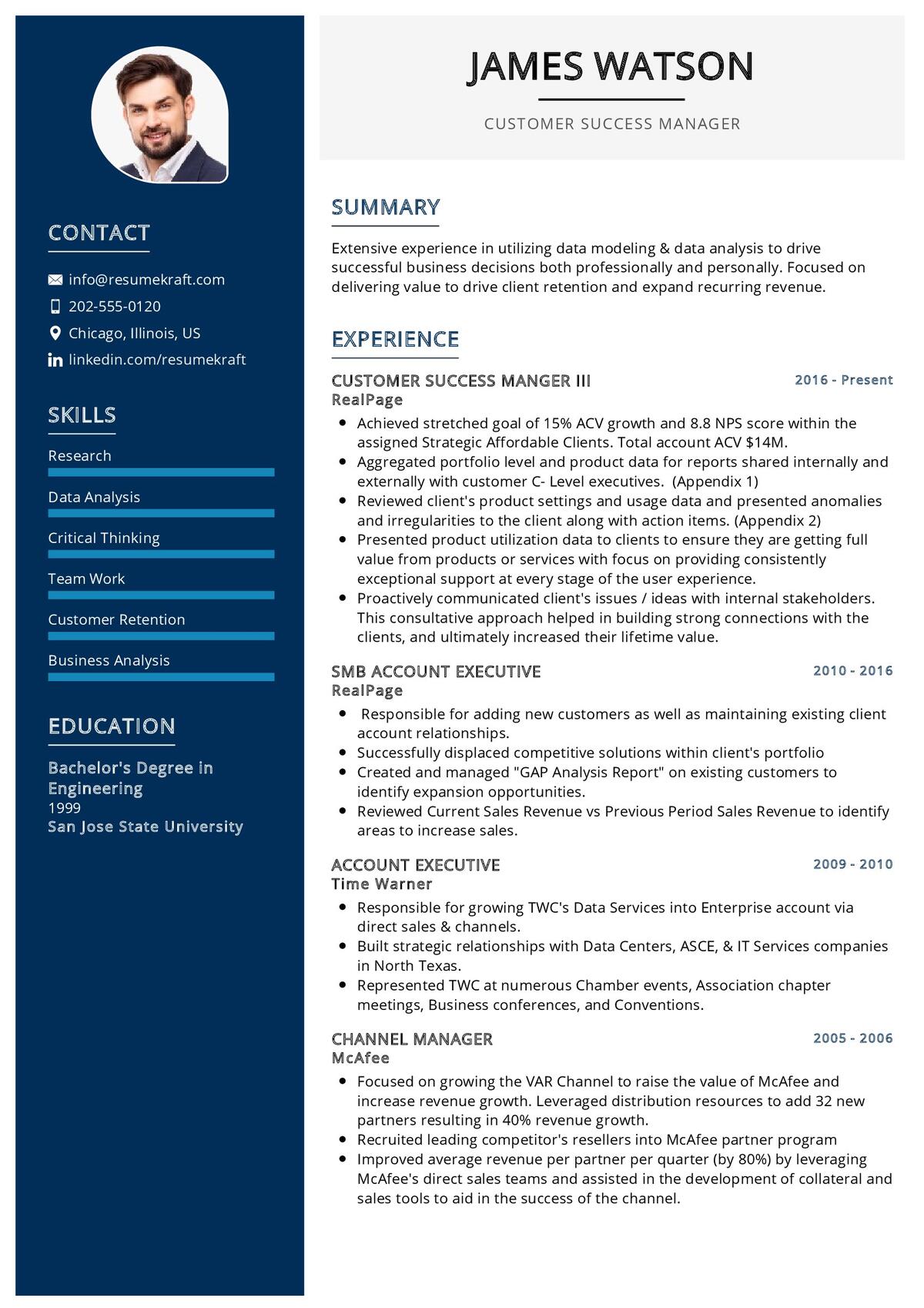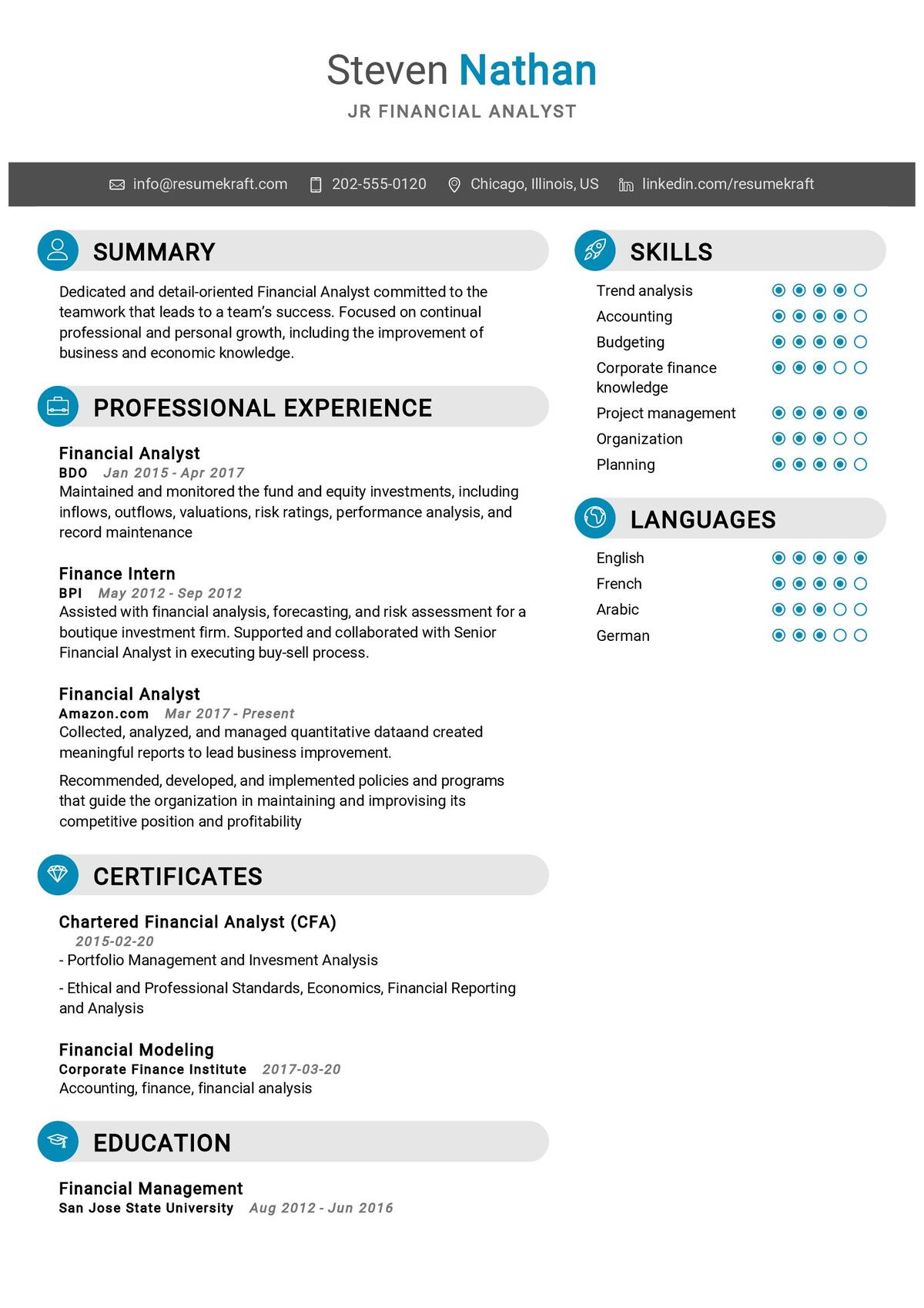
A Safety Officer plays a crucial role in ensuring workplace safety and compliance with regulatory standards. Their primary responsibility is to prevent accidents and injuries, protect employees, and maintain a safe work environment. When interviewing candidates for this vital role, employers aim to assess their knowledge of safety protocols, ability to handle emergency situations, and understanding of legal regulations related to occupational health and safety. In this article, we will discuss the top 34 safety officer interview questions and provide insights into how candidates can effectively answer them.
Top 34 Safety Officer Interview Questions
1. Can you explain the role of a Safety Officer in the workplace?
A Safety Officer is responsible for promoting and enforcing safety policies and procedures in the workplace. They conduct regular inspections, identify potential hazards, and ensure compliance with safety regulations. Additionally, they provide safety training to employees and investigate incidents to prevent future accidents.
Explanation: The role of a Safety Officer is multifaceted and requires a proactive approach to ensure that safety protocols are followed consistently in all areas of the workplace.
2. What are the most important safety regulations you need to know as a Safety Officer?
Safety Officers must be familiar with OSHA (Occupational Safety and Health Administration) regulations, hazard communication standards, and emergency preparedness guidelines. They should also understand industry-specific safety protocols that may apply to the organization they are working for.
Explanation: Knowledge of safety regulations is essential for ensuring compliance and minimizing risks in the workplace.
3. How do you conduct a risk assessment in the workplace?
A risk assessment involves identifying hazards, evaluating the risks associated with those hazards, and implementing control measures to mitigate them. This process includes inspecting the workplace, analyzing past incidents, and consulting with employees to identify potential dangers.
Explanation: Risk assessments help to systematically identify and control workplace hazards, reducing the likelihood of accidents.
4. Can you describe a time when you successfully managed a safety-related incident?
One example of successfully managing a safety incident is when I quickly addressed a chemical spill in a manufacturing facility. I initiated the emergency response plan, evacuated the area, and ensured that the appropriate cleaning procedures were followed to prevent exposure.
Explanation: Handling safety incidents effectively requires quick thinking, adherence to protocols, and clear communication with the team.
5. How do you ensure employees follow safety guidelines?
I ensure employees follow safety guidelines by providing regular training, conducting safety audits, and reinforcing the importance of safety through meetings and visual reminders like signs and posters. I also encourage open communication so that employees feel comfortable reporting potential hazards.
Explanation: Training and consistent communication are key strategies for encouraging adherence to safety protocols.
6. What is your process for investigating workplace accidents?
When investigating a workplace accident, I start by gathering facts through interviews with witnesses, reviewing safety records, and examining the scene of the incident. I then analyze the root cause and recommend corrective actions to prevent future occurrences.
Explanation: A thorough investigation ensures that all contributing factors are identified and addressed.
Build your resume in just 5 minutes with AI.

7. How do you stay up-to-date with safety regulations and industry standards?
I stay updated with safety regulations by attending safety training programs, subscribing to industry newsletters, and regularly reviewing OSHA updates and other relevant regulatory information. I also participate in safety forums and professional organizations to stay informed about best practices.
Explanation: Remaining current with safety regulations ensures compliance and the continuous improvement of safety practices.
8. Can you describe your experience with safety audits and inspections?
I have conducted numerous safety audits and inspections, focusing on identifying potential hazards and ensuring compliance with safety regulations. I use checklists to ensure consistency during inspections and work with management to implement corrective actions when necessary.
Explanation: Safety audits and inspections are essential tools for identifying and mitigating risks in the workplace.
9. How do you handle employee resistance to safety protocols?
When faced with employee resistance, I emphasize the importance of safety for their own well-being and that of their colleagues. I also address any misconceptions they may have and involve them in safety discussions to foster a sense of ownership over the safety process.
Explanation: Addressing resistance requires empathy, communication, and a focus on the benefits of safety compliance.
10. What safety training programs have you developed or facilitated?
I have developed and facilitated safety training programs on topics such as fire safety, hazardous material handling, and workplace ergonomics. My training sessions are interactive and tailored to the specific needs of the workforce.
Explanation: Effective safety training is a proactive approach to reducing workplace accidents and injuries.
11. How do you assess the effectiveness of your safety programs?
I assess the effectiveness of safety programs by tracking key performance indicators (KPIs) such as incident rates, near-miss reports, and employee feedback. Regular audits and employee evaluations also help measure the program’s success.
Explanation: Continuous evaluation of safety programs ensures their relevance and effectiveness in reducing risks.
12. How would you handle a situation where a supervisor ignores safety protocols?
In this situation, I would approach the supervisor privately to discuss the importance of following safety protocols. I would explain how their actions set an example for others and discuss potential consequences for the organization. If the behavior continues, I would escalate the issue to higher management.
Explanation: Addressing non-compliance at all levels is crucial to maintaining a safe work environment.
13. What is the importance of Personal Protective Equipment (PPE), and how do you ensure its proper use?
PPE is critical for protecting employees from workplace hazards, such as exposure to chemicals or physical injuries. I ensure its proper use by conducting training on how to wear and maintain PPE and by performing regular checks to confirm compliance.
Explanation: PPE is a vital line of defense, and proper usage can significantly reduce the risk of injury.
14. Can you describe a time when you had to introduce a new safety protocol?
I introduced a new safety protocol for handling hazardous materials in a laboratory setting. This involved updating safety data sheets, training employees, and monitoring compliance through regular inspections and audits.
Explanation: Implementing new protocols requires careful planning, communication, and follow-up to ensure effectiveness.
15. How do you manage safety during emergency situations like fires or chemical spills?
During emergencies, I follow the established emergency response plan, ensuring that all employees are evacuated safely and that the appropriate response teams are notified. I also lead post-incident reviews to assess what went well and what could be improved.
Explanation: Effective emergency management is essential for minimizing harm and preventing future incidents.
16. What steps do you take to promote a safety-first culture in the workplace?
I promote a safety-first culture by encouraging open communication about safety concerns, rewarding safe behaviors, and involving employees in safety planning. I also provide continuous training and ensure that safety is integrated into daily operations.
Explanation: Building a safety-first culture requires long-term commitment and employee engagement.
17. How do you handle reporting and documentation related to safety incidents?
I ensure that all safety incidents are reported promptly and documented accurately. This includes maintaining detailed records of investigations, corrective actions, and follow-up procedures. I use incident reports to identify trends and prevent future accidents.
Explanation: Accurate reporting and documentation are essential for identifying patterns and preventing future incidents.
18. How would you manage safety for a project with multiple contractors on-site?
I would ensure that all contractors are aware of and adhere to the site’s safety protocols. This includes conducting safety briefings, coordinating with their safety teams, and performing regular inspections to monitor compliance.
Explanation: Coordinating safety efforts across multiple contractors requires clear communication and oversight.
19. What measures would you take to reduce workplace accidents?
To reduce workplace accidents, I would conduct regular hazard assessments, implement targeted safety training, and continuously monitor compliance with safety protocols. I would also foster a culture of safety where employees feel comfortable reporting potential hazards.
Explanation: Accident prevention is an ongoing process that involves identifying risks and implementing effective control measures.
20. How do you prioritize safety issues when multiple hazards are identified?
I prioritize safety issues based on the severity of the hazard and the potential for harm. Critical hazards that pose an immediate risk to life or health are addressed first, while less severe issues are scheduled for follow-up.
Explanation: Effective prioritization ensures that the most dangerous hazards are addressed immediately.
21. Can you explain the difference between hazard and risk?
A hazard is something that has the potential to cause harm, such as a slippery floor or exposed wiring. A risk is the likelihood that the hazard will actually cause harm. Managing safety involves both identifying hazards and mitigating the associated risks.
Explanation: Understanding the distinction between hazard and risk is crucial for effective safety management.
22. What is the importance of safety drills, and how often should they be conducted?
Safety drills are essential for preparing employees to respond to emergencies quickly and effectively. They should be conducted regularly, at least annually, or more frequently in high-risk environments, to ensure that all employees know what to do in case of an emergency.
Explanation: Regular safety drills help reinforce emergency procedures and prepare employees for real-life situations.
23. How would you handle a situation where an employee refuses to wear required PPE?
I would first speak to the employee to understand their reasons for refusing and explain the importance of PPE in protecting their health. If they continue to refuse, I would follow company policy and escalate the issue to management if necessary.
Explanation: Ensuring compliance with PPE requirements is critical for employee safety and should be enforced consistently.
24. How do you develop a safety management plan for a new site?
When developing a safety management plan for a new site, I begin by conducting a thorough risk assessment to identify potential hazards. I then outline safety procedures, establish emergency protocols, and provide training to all employees before operations begin.
Explanation: A comprehensive safety management plan is essential for preventing accidents and ensuring compliance with safety regulations.
Planning to Write a Resume?
Check our job winning resume samples


25. Can you explain the concept of ‘Safety by Design’?
Safety by Design involves integrating safety features into the design of equipment, processes, and workplaces to minimize risks. This proactive approach ensures that potential hazards are addressed during the planning phase rather than after an incident occurs.
Explanation: Incorporating safety into the design phase helps prevent accidents and ensures a safer work environment.
26. How do you conduct safety meetings, and what topics do you cover?
Safety meetings should be conducted regularly to discuss current safety issues, review recent incidents, and update employees on new safety protocols. I cover topics such as hazard identification, PPE use, and emergency preparedness.
Explanation: Regular safety meetings are essential for maintaining open communication about safety issues and keeping employees informed.
27. How do you ensure compliance with safety regulations in high-risk environments?
In high-risk environments, I ensure compliance by conducting frequent inspections, providing specialized training, and using advanced monitoring systems to track safety metrics. I also work closely with management to address any safety concerns immediately.
Explanation: High-risk environments require enhanced safety measures to prevent accidents and protect employees.
28. How would you improve an existing safety program?
I would improve an existing safety program by reviewing incident data, conducting employee surveys, and performing a gap analysis to identify areas for improvement. Based on this information, I would update training programs, introduce new safety protocols, and monitor progress over time.
Explanation: Continuous improvement of safety programs ensures that they remain effective and relevant in addressing current workplace risks.
29. Can you describe a time when you had to deal with a non-compliant employee?
I once encountered an employee who consistently failed to follow safety protocols. I addressed the issue by providing additional training and explaining the potential consequences of their behavior. After several discussions, the employee improved their compliance, and no further issues occurred.
Explanation: Dealing with non-compliance requires patience, clear communication, and a willingness to provide additional support as needed.
30. How do you communicate safety issues to upper management?
I communicate safety issues to upper management by providing detailed reports on incident trends, risk assessments, and compliance audits. I also recommend corrective actions and outline the potential financial and operational impacts of safety-related issues.
Explanation: Clear communication with management is essential for securing the resources and support needed to address safety concerns.
31. How do you manage safety in a remote or off-site location?
Managing safety in remote or off-site locations requires regular communication with site supervisors, conducting virtual safety audits, and ensuring that employees have access to the necessary safety equipment and resources. I also provide remote safety training when in-person sessions are not feasible.
Explanation: Remote locations present unique challenges that require tailored safety management strategies.
32. How do you handle stress in high-pressure situations, especially during safety incidents?
I handle stress by staying calm, focusing on the task at hand, and following established safety protocols. In high-pressure situations, it is essential to remain composed and communicate clearly with others to manage the incident effectively.
Explanation: Staying calm under pressure is critical for managing safety incidents and ensuring a swift, organized response.
33. How do you collaborate with other departments to improve safety?
I collaborate with other departments by organizing cross-functional safety committees, sharing incident data, and seeking input from employees on safety improvements. Regular communication ensures that all departments are aligned with safety goals and protocols.
Explanation: Collaboration with other departments is key to ensuring that safety initiatives are implemented effectively across the organization.

Build your resume in 5 minutes
Our resume builder is easy to use and will help you create a resume that is ATS-friendly and will stand out from the crowd.
34. What are the key qualities of an effective Safety Officer?
An effective Safety Officer must be detail-oriented, proactive, and possess excellent communication skills. They should have a strong understanding of safety regulations and be able to work collaboratively with others to create a safe work environment.
Explanation: The ability to lead, communicate, and stay informed are critical qualities for success in a safety officer role.
Conclusion
The role of a Safety Officer is essential in maintaining a safe work environment and ensuring compliance with safety regulations. By asking the right questions during the interview process, employers can assess a candidate’s knowledge, experience, and problem-solving abilities related to workplace safety. The answers provided to the top 34 safety officer interview questions offer valuable insights into how potential candidates approach their responsibilities, manage safety protocols, and promote a culture of safety within an organization.
Recommended Reading:

